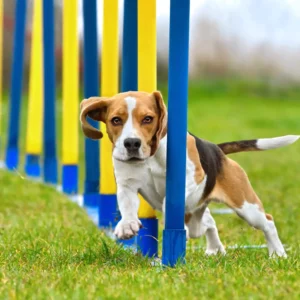Blog
Traveling With Your Pet: A How To Guide
Traveling with your pet, be it a dog or a cat, can be a rewarding experience, offering both you and your furry friend the chance to explore new destinations together. However, traveling with your pet requires meticulous planning to ensure the journey is safe, comfortable, and stress-free. This comprehensive guide covers everything you need to know about traveling with your pet by plane or car, including veterinary preparations, essential gear, pet care on the go, and recognizing signs of stress.
Pre Traveling With Your Pet Veterinary Preparations
Health Check-up: Schedule a visit to the vet to ensure your pet is healthy enough for travel. Discuss your travel plans, as the vet can provide specific advice based on your pet’s health, breed, and the destination’s climate.
Vaccinations and Health Certificates: Ensure all vaccinations are up-to-date, especially rabies. Many airlines and destinations require a health certificate issued by a vet within a certain timeframe before traveling with your pet.
Preventatives: Update your pet’s flea, tick, and heartworm preventatives. Consider a sedative or anti-anxiety medication if your vet recommends it for travel.
Microchip and ID: If not already done, get your pet microchipped and ensure they wear a collar with an ID tag that includes your contact information.
Essential Gear for Traveling With Your Pet
Crates and Carriers: Invest in a well-ventilated, airline-approved crate or carrier. It should be large enough for your pet to stand, turn around, and lie down comfortably. Acclimate your pet to the carrier well before your trip.
Comfort Items: Bring items that smell like home, such as blankets or toys, to comfort your pet during the journey.
Food and Water: Pack enough of your pet’s regular food for the entire trip, plus a little extra. Collapsible food and water bowls are convenient for traveling with your pet.
Leash and Harness: A sturdy leash and harness are essential for safely moving your pet in and out of vehicles and terminals.
Pet First-Aid Kit: Include basic first-aid supplies, any medications your pet takes, and a copy of their medical records.
Traveling by Plane
Choosing the Airline: Research airlines to find those with pet-friendly policies. Some allow pets in the cabin if the carrier fits under the seat, while others require pets to travel as cargo.
Reservation and Fees: Book your pet’s reservation as early as possible since airlines limit the number of pets allowed in the cabin. Be aware of and prepared to pay any pet travel fees.
Before the Flight: Exercise your pet before heading to the airport to help them relax. Check in early to ensure you and your pet are comfortably situated.
During the Flight: Keep your pet in their carrier and under the seat in front of you if allowed in the cabin. If your pet is in cargo, trust that the airline staff are trained to handle pets with care.
Traveling by Car
Securing Your Pet: Use a crash-tested pet seatbelt or a secured carrier to keep your pet safe in case of a sudden stop.
Breaks and Exercise: Stop every 2-3 hours to let your pet relieve themselves and get some exercise. Always use a leash during breaks to prevent them from running off.
Never Leave Pets Alone in Cars: Even with the windows cracked, temperatures inside a car can soar, putting your pet at risk of heatstroke.
Recognizing Signs of Stress
Dogs: Whining, barking, panting, pacing, or trembling can indicate stress. Refusal to eat or drink and changes in elimination habits are also signs while traveling with your pet.
Cats: Meowing, hissing, hiding, or attempting to escape the carrier signal stress in cats. Like dogs, refusal to eat or drink and changes in elimination habits may occur.
Proper Pet Care on the Go
Hydration: Ensure your pet has access to fresh water at all times. Monitor their intake, especially in hot weather.
Comfort and Reassurance: Speak to your pet in a calm, soothing voice and offer treats and praise to reassure them.
Temperature Control: Maintain a comfortable temperature in the vehicle or carrier. Use sunshades on windows if necessary.
Conclusion
Traveling with your pet requires careful planning and consideration of their needs and comfort. By following these guidelines and preparing properly, you can ensure a safe and enjoyable travel experience for you and your furry companion. Always prioritize their well-being and comfort, and be prepared to adjust your plans if your pet shows signs of significant stress or discomfort.



